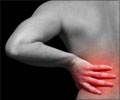More than half of older adults in the United States have experienced bothersome pain impairing their physical function and underscoring the need for public health action on pain, says study.

The researchers gained several insights from the new study:
• Bothersome pain afflicts half of community-dwelling older adults in the United States.
• The majority of older adults with pain reported having pain in multiple locations, such as in the back, hips, and knees.
• The percentage of people with pain did not differ by age, even when researchers accounted for dementia and cognitive performance.
• Pain was strongly associated with decreased physical capacity. Older adults with pain, particularly those with pain in multiple locations, had weaker muscle strength, slower walking speed, and poorer overall function than those without pain.
The researchers analyzed data from the National Health and Aging Trends Study (NHATS), which was designed to investigate multiple aspects of functioning in later life and is funded by the U.S. National Institute on Aging, part of the National Institutes of Health. Investigators conducted in-person interviews with 7,601 adults ages 65 years and older who were enrolled in the NHATS in 2011. All were Medicare beneficiaries.
The overall prevalence of bothersome pain in the last month in the study group was 52.9%. Pain did not vary across age groups, and this pattern remained unchanged when accounting for cognitive performance, dementia, proxy responses, and residential-care living status. Pain prevalence was higher in women and in older adults with obesity, musculoskeletal conditions, and depressive symptoms. The majority (74.9%) of older adults with pain reported multiple sites of pain.
Several measures of physical capacity, including muscle strength and lower-extremity physical performance, were associated with pain and multisite pain. For example, self-reported inability to walk three blocks was 72% higher in participants with pain than without pain. Participants with one, two, three, and four or more sites were 41%, 57%, 81%, and 105% more likely to report inability to walk three blocks, respectively, than older adults without pain.
Advertisement
Population aging is occurring in nearly every country of the world. Not only are the number and proportion of older adults increasing globally, but the older adult population itself is getting older as well. Gains in life expectancy at older ages have fueled the rapid growth of the oldest-old segment of the population, although it is unclear whether improvements in functional status of older adults have kept pace. Since disability in late life is a major predictor of medical and social service needs, investigating risk factors for functional decline is a major public health priority. Today's published study in PAIN® by Patel and colleagues clearly identifies the high burden of pain in the older adult population.
Advertisement










